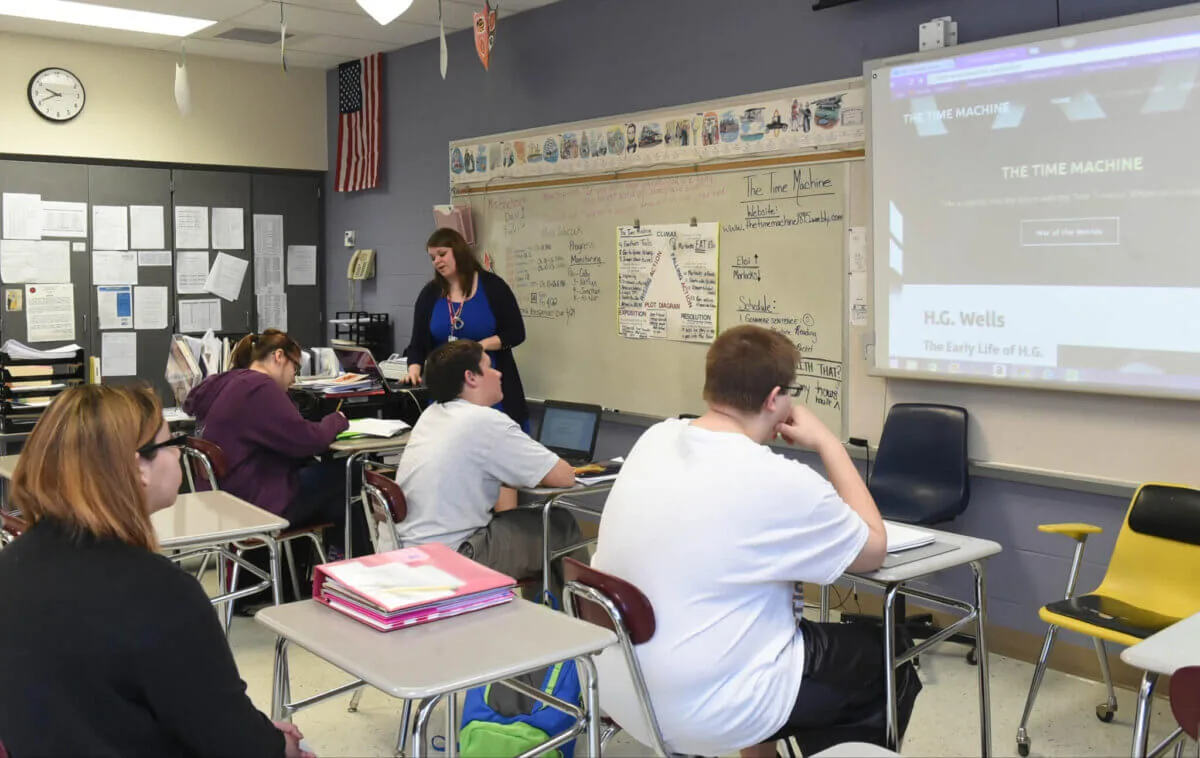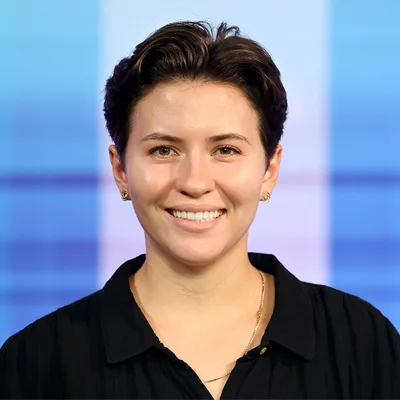
Angstadt/MediaNews Group/Reading Eagle via Getty Images)
Three students who have taken dual enrollment courses and/or participated in an early college achievement program through Maricopa Community Colleges say the advantages are worth the rigor.
For high school students who take the leap, enrolling in dual enrollment courses can get them an associate’s degree when they graduate.
The efforts of guidance counselors, dual enrollment teachers, and program coordinators give students the opportunity to attain their associate’s degree at the same time they graduate high school.
More than 70,000 Arizona students take advantage of this opportunity every year—including Alonzo Coronado, a dual enrollment alumnus who is now studying animation at Arizona State University.
High School Degree With College Experience
Coronado, a graduate of McClintock High School in Tempe and member of the Pascua Yaqui Tribe, took enough dual enrollment courses to graduate with an associate’s degree by the time he finished high school.
In addition to taking dual enrollment courses offered at his high school, Coronado also filled his course load with Saturday morning classes at Mesa Community College and online classes through Rio Salado College.
RELATED: New Report Shows Gaps in Dual Enrollment Offerings From Arizona High Schools
Coronado plans on studying abroad in Japan, thanks to the extra space in his degree program that dual enrollment afforded him.
To help offset the costs associated with dual enrollment classes, Coronado was able to have all of his dual enrollment credits paid for through his tribe’s higher education assistance program.
Other financial programs are also available to help dual enrollment students cover the cost of their college course load. One of these programs is Achieving a College Education (ACE).
What is the ACE Program?
ACE is offered at over 100 Arizona high schools through Maricopa Community Colleges. It helps high school students who apply earn 24 college credits—free of cost.
Willow Canyon High School senior Jasper Nicholson began taking dual enrollment classes through ACE during her sophomore year of high school. Fast forward two years, and she’s on track to graduate high school with her associate’s degree, with eyes looking forward to a dual major in graphic design and film production at ASU.
And thanks to earning her dual enrollment credits, she can potentially graduate in less than four years.
Nicholson took classes at Rio Salado College in addition to the dual enrollment classes she took at Willow Canyon High School. Nicholson was also able to receive financial aid for the majority of the classes she took.
“I feel like the ACE program increased my wanting to go to college,” Nicholson said. “They [ACE classes] were really beneficial because it was not as much pressure as a college class.”
While anyone can take a dual enrollment class, the ACE program is selective. Students can only enroll if they:
- apply during their sophomore year of high school
- are a first-generation college student
- live in a single-parent household
- identify as a member of an underrepresented group
- experience economic hardship
- face other difficult environmental factors
“One of the Most Exciting Opportunities”
Students accepted into the ACE program participate during their junior and senior years of high school and can take qualifying dual enrollment courses during the fall, spring, and summer semesters in person, online, or hybrid.
Nicholson learned about the ACE program almost by accident—she was on the phone with someone from Rio Salado College to ask a question about dual enrollment, and the advisor she spoke with let her know she might also qualify for ACE.
“I think it’s one of the most exciting opportunities and one of the most beneficial opportunities for students because it saves them both time and money,” said EJ Anderson, director of student services at Rio Salado College.
The online classes work well for students with transportation issues, or students who play sports, Anderson said.
Even though the extra classes in high school were an added struggle, Coronado has been able to take classes strictly toward his major since starting full-time at ASU. He attributes this to being able to complete all of his general education requirements through dual enrollment.
“There was a lot more free space in my schedule, I was able to even take electives that I really enjoyed,” Coronado said.
“With [taking] dual enrollment and community college classes, it did make me feel like I do have the capability of being able to achieve more than I would have expected,” Coronado said.
Learning Valuable Life Skills
Students taking dual enrollment through ACE take one class in the fall, one in the spring, and two in the summer until they get the 24 college credits. The ACE program mentors and monitors the student’s progress, making sure they’re successful in those classes.
“All my advisors were always there for me when I needed them, and they were giving me as much help as possible,” said Selene Contreras, ACE student and junior at Heritage Academy Laveen.
Having some preference in the classes she was able to take for the ACE program helped ensure her success and kept her on track to graduate with her associate’s degree, Contreras said.
Ellen Driscoll, a dual enrollment teacher at Metro Tech High School in Phoenix who teaches French, sees dual enrollment as an amazing opportunity for students.
RELATED: Single Moms in Arizona Can Get Free Higher Education Through This Program
“I can get them set up, I can get them enrolled, I can show them where to go, where to turn in the papers, I know who to call when there is a problem,” Driscoll said. “It’s like they get to dip their foot into the bureaucracy of higher education and I’m here as their guide.”
That level of support, Driscoll said, might not be available to students starting college after high school. Even with the option of starting at community college, Driscoll sees dual enrollment as the best path to educational success.
In addition to support, Driscoll pointed out that finances play a major role in students’ success.
Most of her students receive some kind of scholarship and do not have to purchase the textbook in her class like they would at community college.
For dual enrollment students like Contreras, guidance from instructors has been crucial for her as she’s tried to develop the time management skills needed to balance her high school and college course loads.
“Anytime I needed help with a specific class, the instructors were always there, they always reached out to me and they responded to me with any questions that I had and about the program itself,” Contreras said.
Looking for the latest Arizona news? Sign up for our FREE daily newsletter.
Politics

6 terrifying things that could happen if the Comstock Act is used to target abortion
Does 1873 sound like a really, really long time ago? Well, that’s because it is—but if Republicans and far-right anti-abortion activists have their...

He said what? 10 things to know about RFK Jr.
The Kennedy family has long been considered “Democratic royalty.” But Robert F. Kennedy, Jr.—son of Robert F. Kennedy, who was assassinated while...
Local News

Opinion: Strategies for Child Abuse Prevention
11 ways you can be an ally in the fight against child abuse. April is Child Abuse Prevention Month. In the United States, it is estimated that a...

Biden marks Earth Day by announcing $7 billion in solar grants
The Biden administration on Monday announced the recipients of its Solar For All Program, a $7 billion climate program that aims to lower energy...





